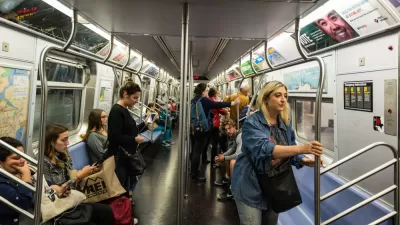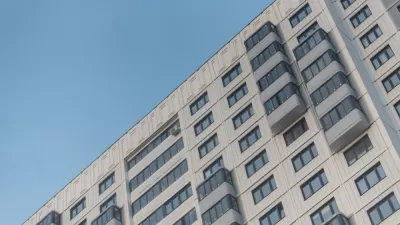A 1999 law forbids the State Department from funding pavilions at international expositions. Fred Bernstein argues that the law is misguided, and should be changed before the next year's World's Fair in Shanghai.
"Next year, the eyes of the world will be on Shanghai, where the Chinese government will host a world exposition (informally called a world's fair) from May 1 to October 31. Nearly 200 countries are building pavilions, many by important architects chosen in national competitions. The host city will try to match the showmanship of last summer's Beijing games, and, unlike the made-for-television Olympics, the expo will likely attract tens of millions of Chinese visitors."
"That the United States wouldn't attend a giant international gathering, at a time when so much is at stake in U.S.–Chinese relations, seems unimaginable. Sadly, though, it is not unprecedented. The U.S. embarrassed itself with a tacky pavilion at the Seville expo in 1992 (timed to the 500th anniversary of Columbus' first voyage, with the U.S. meant to be the guest of honor). It ignored the next expo (in Hannover, Germany, in 2000), insulting a crucial ally. At the insistence of Toyota, whose retired chairman conceived the 2005 expo in Aichi, Japan, the U.S. did have a pavilion. But the building's creators, who had to rely on corporate funding, put more thought into the VIP suite (where those sponsors could entertain clients) than into the main event, a film about Benjamin Franklin."
FULL STORY: Comment: Worlds Away

Trump Administration Could Effectively End Housing Voucher Program
Federal officials are eyeing major cuts to the Section 8 program that helps millions of low-income households pay rent.

Planetizen Federal Action Tracker
A weekly monitor of how Trump’s orders and actions are impacting planners and planning in America.

Ken Jennings Launches Transit Web Series
The Jeopardy champ wants you to ride public transit.

Crime Continues to Drop on Philly, San Francisco Transit Systems
SEPTA and BART both saw significant declines in violent crime in the first quarter of 2025.

How South LA Green Spaces Power Community Health and Hope
Green spaces like South L.A. Wetlands Park are helping South Los Angeles residents promote healthy lifestyles, build community, and advocate for improvements that reflect local needs in historically underserved neighborhoods.

Sacramento Plans ‘Quick-Build’ Road Safety Projects
The city wants to accelerate small-scale safety improvements that use low-cost equipment to make an impact at dangerous intersections.
Urban Design for Planners 1: Software Tools
This six-course series explores essential urban design concepts using open source software and equips planners with the tools they need to participate fully in the urban design process.
Planning for Universal Design
Learn the tools for implementing Universal Design in planning regulations.
Heyer Gruel & Associates PA
Ada County Highway District
Institute for Housing and Urban Development Studies (IHS)
City of Grandview
Harvard GSD Executive Education
Toledo-Lucas County Plan Commissions
Salt Lake City
NYU Wagner Graduate School of Public Service





























